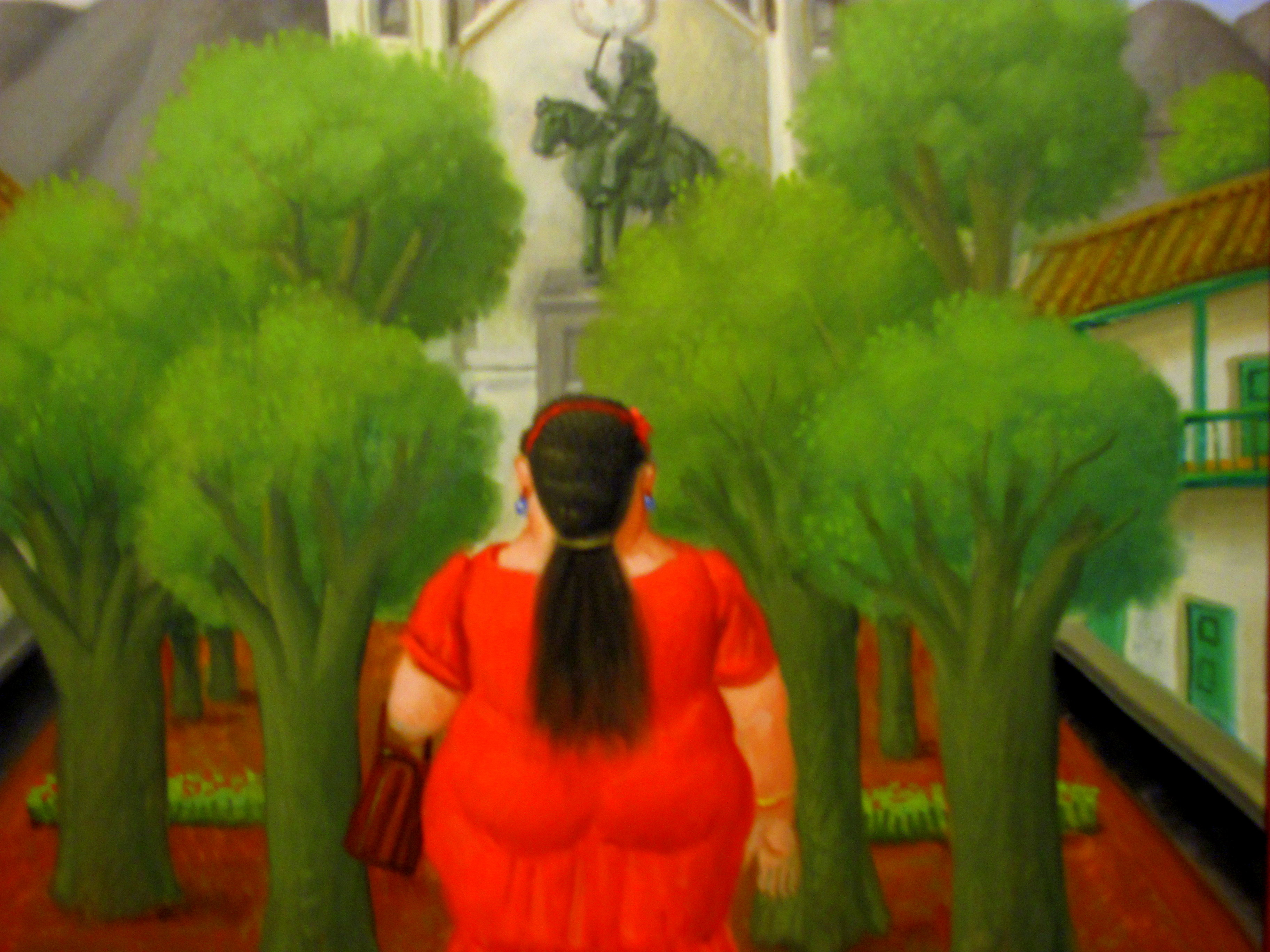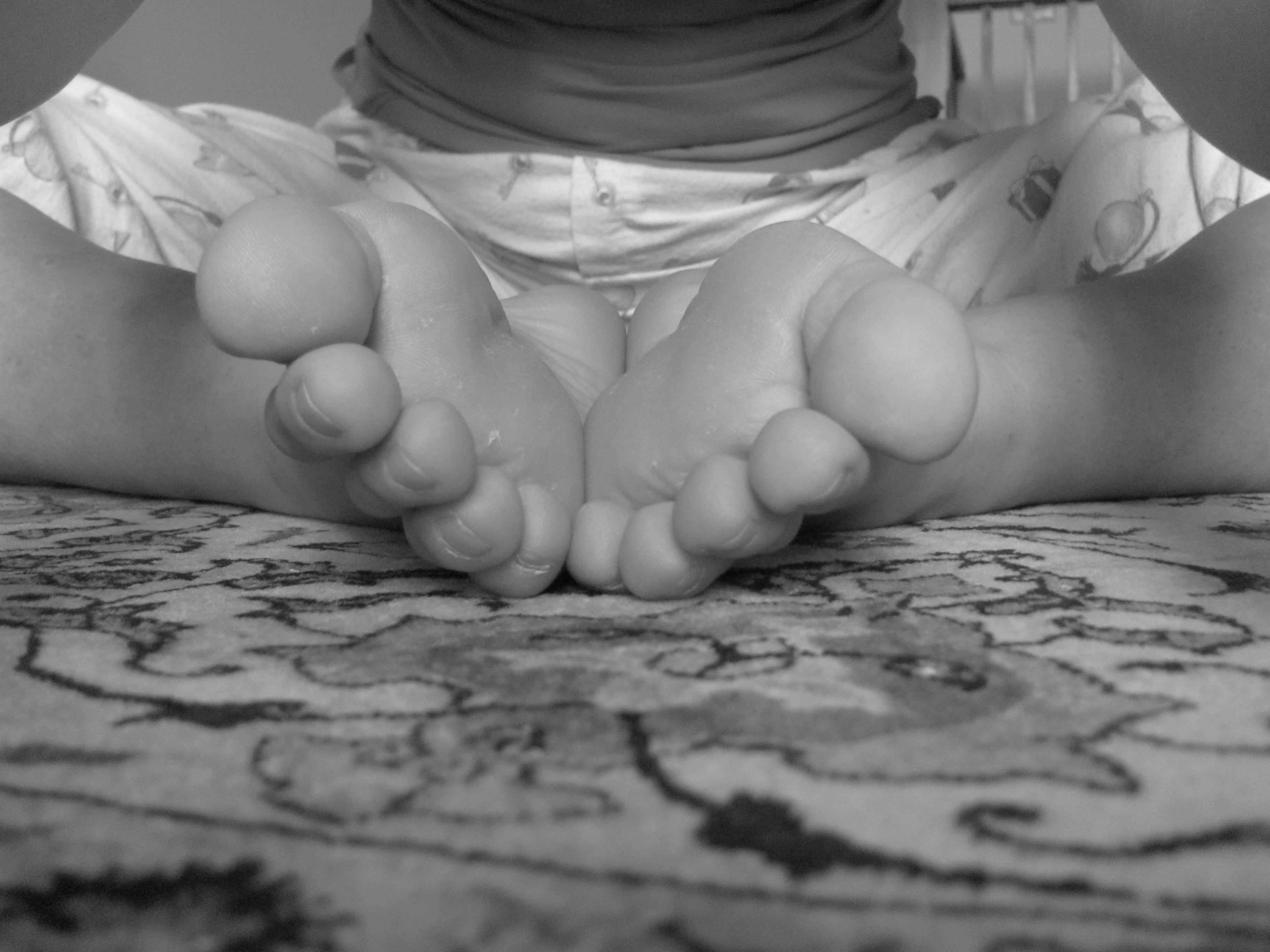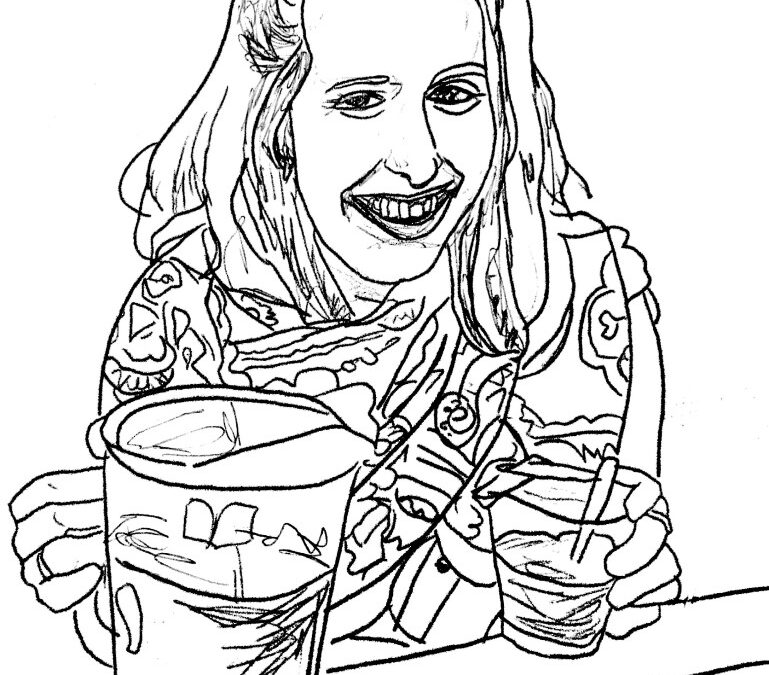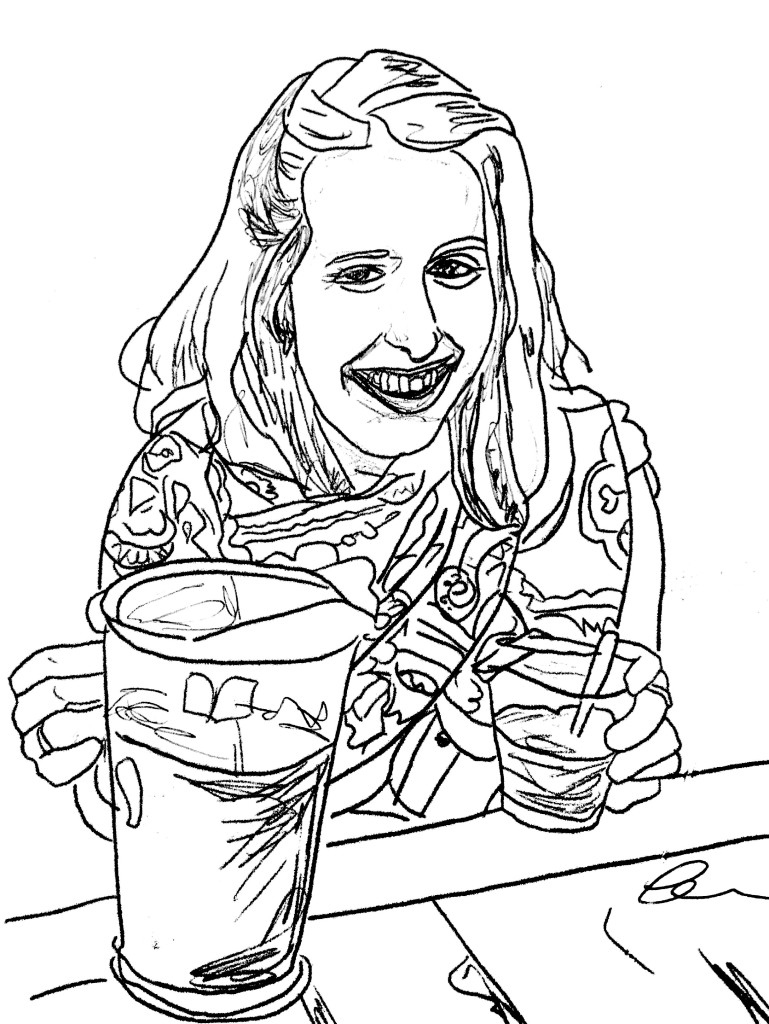
by Dr. Talia Marcheggiani, ND | Jun 25, 2021 | Body Image, Mental Health, Mind Body Medicine, Mindfulness, Self-care, Self-esteem, Weight Loss
I’ve struggled with body image as much as the next woman. In certain influencer, nutrition and health circles I find “skinny” is confused for “healthy”. When we talk about health and wellness, people assume we mean “thinness”, or weight loss.
And I want to confess something: I hate treating weight loss.
I love love love when people notice positive side effects from their treatment plans: they’re sleeping better, more relaxed, have better skin and yes, have even noticed some weight loss, but when weight loss is our primary goal, something we’re aiming for at all costs, (and this is the key point) beyond the weight OUR BODY WANTS to be for health, then I’m often stumped.
My goal is to support the healing process of the body, and to do no harm.
Fat, while vilified in our society, is not a 4-letter word. (I also mean that literally… it’s… a 3-letter word).
Our bodies love fat. Fat is stored energy. It’s your cushy bank account—resources saved for a rainy day.
It’s mental, emotional, and physical protection. Our cushioning protects us against falls.
It’s a storage reserve for reproductive needs (growing a baby’s brain and breast-feeding).
It’s the rubber insulation of the electrical wiring of our nervous system and brain. It’s brain mass.
It’s a layer of warmth.
Stress, famine, lack of sleep, inflammation, and hormonal resistance, are some common signals that tell the body to store and maintain fat.
Our bodies also have a set point range at which they feel most comfortable—and this set point, unfortunately for our Instagram followers, may be higher than society tells us it should be.
I have found in my practice that if we treat the underlying causes of fat gain: the inflammation, poor sleep, chronic stress, insulin resistance, etc., we might notice weight loss as a happy side effect of improved metabolic functioning.
Sometimes our bodies have experienced mental, emotional, physical or metabolic trauma and need to hold onto their protective layer a little while longer.
Maybe your body thinks you need a little softness…
I created a course: Intuitive + Mindful Eating, body image, metabolic health, hormones and more.
So, if another diet “failed”, trust me, that’s normal. It’s not your fault.
Diets don’t work.
In fact, in the long run they do the OPPOSITE of what their supposed to do: improve our metabolic health.
Instead they DAMAGE our metabolic health, through cyclical restriction (which often leads to binging and weight gain). And this leads to guilt, shame, and a poor relationship with our body image and food.
The solution is to work with your body where it’s at.
– Understand how your metabolism works, and learn about your Set Point Weight.
– Listen to your cravings and hunger cues and use them as tools for communicating with your body to heal your metabolism
– Make peace with your body size through developing Body Neutrality (easier to achieve than body positivity for a lot of people) and becoming more “embodied”–feeling at home in your body vs. trying to change it.
– Recognizing that you can feel at peace with your body where it’s at right now: and that losing weight (if it means working against your metabolism) won’t make you healthy. And it won’t make you happy.
– Making peace with food through Intuitive and Mindful Eating.
– Practicing gentle nutrition that honours hunger cues and cravings and keeps you fuelled throughout the day.
– Self-compassion
– Understanding how hormones play a role in body size and metabolism and how to nurture them to feel your best.
I cover all of this in more in my course You Weigh Less on the Moon.
Because it’s true, you do!

by Dr. Talia Marcheggiani, ND | Jun 25, 2021 | Body Image, Mental Health, Mind Body Medicine, Mindfulness, Weight Loss
Yes.
Have you heard of something called “self-objectification”?
It is the effect of moving through the world imagining how your body looks to others: perhaps checking yourself out in the mirror, adjusting clothing, taking selfies–the awareness of your body moving through space and the impact your “image” has on others. As if part of your consciousness is outside of yourself, looking in.
Self-objectification is so so common. We all do it.
Does my hair look ok?
Can you take another picture?
I wish my thighs were more toned.
Do this ____make my ____ look _____?
Remember when you were a kid and you just went to the beach? Or, maybe take a page out of Teddy’s book, in the first photo. She doesn’t care about her beach body. She just wants to be on the beach, running, free.
Self-objectification prevents us from being present, from enjoying life. It blocks creativity and flow state.
The remedy?
Embodiment.
Presence.
Body neutrality (the art of worrying about other things—how you look is truly probably the least interesting thing about you!)
Mindfulness.
How does my body feel?
What can my body do?
Am I hungry?
What food do I love to eat?
Am I thirsty?
What would I like to drink?
How does the sun or water FEEL on my skin?
How does the sand feel between my toes?
Can I taste the air on my tongue?
Do my muscles feel tense or relaxed?
Am I breathing from my belly or my chest?
Do I want to move or rest?
And so on.
No matter what, though, the beach is ready for you.
I created a course to introduce you to these topics and more. It’s called you Weigh Less on the Moon.
by Dr. Talia Marcheggiani, ND | Mar 27, 2014 | Body Image, cancer, Women's health, Writing
This piece was meant for the CCNM Body Monologues during the 2014 Women’s Health Week. It is an important story for me to tell, so I decided to finish the final edits and publish it here.
It was in Kingston, Ontario on the campus of Queen’s University, my alma mater, where I first met my roommate, C. We were both giddy with the nervous anticipation of coming face-to-face with the person we’d sleep beside for the next year. We were like two halves of a mail-order marriage; since divorce wasn’t an option, we were determined to make it work.
The pictures we pasted on the walls of our respective sides of the room highlighted the differences in our personalities and adolescent experiences. On her wall, there were sunny photos of rows of carbon copy, bikini-clad young women, posed in a way as to accentuate their lean abdomens and disguise obtuse hips. Their skin was bronzed from the sun. They could have been models. Why weren’t they models? I’m sure some of them were models. On mine, I plastered photos of my mishmash of weird friends. We wore sideways baseball caps, looked into the camera making cartoonish Zoolander faces or tucked our necks in to parody double-chins. We held up our hands in ironic peace signs. We emphasized our ugliness in order to assure our public that we were not trying to fit in. It was hilarious.
(more…)
by Dr. Talia Marcheggiani, ND | Mar 16, 2014 | Body Image, Book, Women's health
Women’s Health Week and International Women’s Day have both come and gone. At the Canadian College of Naturopathic Medicine, Women’s Health Week is usually accented with the popular event, the Body Monologues. Body Monologues, like its vagina-specific counterpart, consists of the telling of narratives on female body image. Every yearly event is filled with challenging, heart-felt, angry and inspiring stories by women as they articulate, through poetry, dance, speech and song, their personal struggles with femininity, sexuality, eating disorders, abuse and fight for body confidence. Sadly, this year, the Body Monologues was cancelled (you can still attend the main event in April 2014, in Toronto – click here for more information). However, even if the Monologue is cancelled, the dialogue must still persist; here are some of my favourite books in the world of female health that challenge the way we view femininity and our relationships with our bodies.
(more…)
by Dr. Talia Marcheggiani, ND | Aug 17, 2013 | Body Image, Health, Nature Cure, Philosophy, Women's health
I approach the summit of the mountain that we’re slowly scaling, 1 vertical kilometre of it, the air cold despite the heavy gaze of the South American sun. My thighs burn but carry me steadily, my breath laboured but sustained, having fallen into a natural, sustainable rhythm within the first few minutes. The altitude is 2700 m above sea level, roughly 10,000 feet, and although I’ve recently arrived from sea-level Toronto, my mitochondria-heavy thighs and I scale the mountain first, my boyfriend and his two able-bodied brothers, who’ve spent their lives at this altitude, lagging behind.
(more…)

by Dr. Talia Marcheggiani, ND | Jan 11, 2013 | Body Image, Nutrition, Research, Weight Loss

The new year brings with it the onslaught of new year’s resolutions, the most common being, of course, to lose weight. While most people think that losing weight can help them better their health and well-being, a new study published in JAMA begs to differ.
(more…)

by Dr. Talia Marcheggiani, ND | Nov 1, 2012 | Balance, Beauty, Body Image, Canadian College of Naturopathic Medicine, Diet, Emotions, Finding yourself, Ideal You, Letting Go, Mental Health, Psychology, Self-care, Self-esteem, Summer, Teaching English as a Foreign Language, Women's health

This post was written in the summer of 2012. Although I hate Mayor Rob Ford, I have to hand it to the man; he must really have a strong sense of self to not get himself down over the very open disdain most Torontonians hold for him. I wonder if my ego would take that kind of repeated assault over and over again, especially that whole business with his weight-loss.
I was always kind of a chubby kid and, when society started make me conscious of the fact that this was not the way to be I decided to exercise and, essentially, begin dieting. This has led to a life where I rarely get through a day without at least having the notion weight sail through my mind’s seas. This seems kind of depressing when expressed, but it’s a concern that I work to push through, taking from it what serves to make me healthy and striving to leave behind the parts of it that lead to obsession and self-loathing. Many of us deal with similar mental struggles; young women are brought up in a society where nothing less than perfection is accepted. We have many emotional battles to fight.
Just the other day I was sitting in a Yorkville cafe, near my work, being kept company by my (closed) USMLE Step 1 review book and being kept entertained by watching passersby through the window. Yorkville is an interesting place to people-watch because everyone who struts by looks like they’re trying to find their way to a fashion runway, but got lost and then walked into Holt Renfrew, and then into Starbucks and now they’re back to looking for the runway they’re supposed to be walking down. Everyone is wearing an outfit that probably costs more than my student debt and, most of all, it seems that everyone is skinny.
That day, however, I contemplated my surroundings while sipping my coffee and I thought, while observing a fashionably, particularly stick-like woman, we’re told that that’s the body that all women should live in, regardless of profession, personality or personal health history. We live our lives obsessing over how to squish our own shapes into the size of clothes that woman wears, giving little thought to the organs, tissues and vis medicatrix naturae, or life force, that actually lies inside each of us. As I marinated in this little personal revelation, I took another sip of coffee and admitted, She looks nice, fashionable and healthy and maybe that body shape is good for her. However, there are many shapes of beautiful and I don’t think that shape is good for me.
I leaned back in my chair and felt the contentedness of having released part of a great mental burden.
Fast forward to a few days later: I give my class a speaking and writing assignment partly to kill time, to foster creativity and to improve their language skills, especially writing, which is always abysmal. I have each group generate a list of 10, random, unrelated words and then hand the list over to the other group, who must create a short story using all the words. As a class activity, it actually worked out quite well.
However, one of the groups, headed by a stronger student, who has a rather witty, yet dark sense of humour, created a story featuring, you guess it, me, their teacher. Sometimes I enjoy the limelight of teaching, other times I shy away from it, passing the buck onto the students, which actually works to their favour. Most of the time, however, I appreciate working with other people and getting to know these interesting students from a variety of different countries.
This incident, however, made me want to revert back to a student hiding in the back of the classroom. The gist of their story was that I, Talia, am invited to a party but can’t go because I need a new dress and I can’t find a beautiful dress to fit me because I’m too fat. Urgh. On the outside, I figure it must be a joke, an attempt at being funny. They just didn’t realize what a loaded word fat is for me. I laugh it off, correct some grammar mistakes and make a joke about it. I know deep down that most jokes resemble some form of truth and on the inside my emotions resemble some kind of amusement park ride, beginning at shock then surging between anger, down to hurt and even lower to despair.
It’s not the first time someone else has openly criticized my body. Each incident, while stinging at the first impact, can usually be cooled off with some deep breaths, body work and a few self-loving affirmations. However, it does deepen the contempt I have for how women are viewed in society.
From being lectured by a professional exerciser and dieter for Women’s Health Week at CCNM (she was supposed to discuss body image and the media and instead focused on the existential importance of jumping on a trampoline and limiting grains to rid the body of that “unsightly” stomach pooch) to being the recipient of comments about people who eat healthy but don’t look it, it’s no small wonder that the word weight has set up permanent neural synapses in my brain and, most likely, the brain of every other woman who has ever lived in society. Why is it our job to please those around us by conforming to the correct societal ideal of the times? Is it not enough to be fit, happy and healthy?
So while I wait for the next person to deliver a blow to my apparently fragile ego by pretending they know something about me by judging by the size of my behind, I will be sitting in a cafe, philosophizing about body image and maybe, just maybe, feeling a little bit of extra sympathy for Rob Ford.

by Dr. Talia Marcheggiani, ND | Aug 13, 2012 | Art, Art Therapy, Beauty, Body Image, Colour, Creativity, Culture, Finding yourself, Mental Health, Mindfulness, NPLEX, Self-esteem, Self-reflection, Toronto, Writing
 My art is mainly inspired by nature or by places I’ve traveled to or read about. It doesn’t tend to emphasize detail and, when humans are included in the composition, they are usually faceless, depicted as chunky, cubist blocks of colour. People are rarely the main subject of my paintings. And, unlike Frida Kahlo, one of my painting idols, I have never entered the world of portrait painting, much less self-portrait painting.
My art is mainly inspired by nature or by places I’ve traveled to or read about. It doesn’t tend to emphasize detail and, when humans are included in the composition, they are usually faceless, depicted as chunky, cubist blocks of colour. People are rarely the main subject of my paintings. And, unlike Frida Kahlo, one of my painting idols, I have never entered the world of portrait painting, much less self-portrait painting.
When painting the facial features of other people, one must pay obsessive attention to detail. This is a skill I don’t have when it comes to painting. It’s almost as if, through painting, I can leave the burden of fussing over details behind to pursue a sense of therapeutic self-pleasing aesthetic that focuses on colour and shape, rather than the fine lines and subtleties. I tend to spend far too much time obsessing over details in real life and so I view painting as an escape from that. When painting life-like portraits, however, such an escape is impossible.
But, like Picasso, I want to become an artist-of-all-trades or, at the very least, claim experience with different subject matter. So, besides feeling that the experience would be tedious and slightly narcissistic, I decided to attempt a self-portrait.
The thing about self-portraits is that we know our own faces very well. From my teenage years through young adulthood I remember countless hours spent obsessing over my reflection: squeezing zits, plucking eyebrows, willing my nose to shrink and wondering what made my face less poetic than that of a famous actress or singer, almost like there was a secret beauty ingredient I might have been born lacking. Painting a self-portrait demands an attention to detail unlike any other mirror flirtation ever performed. From the exact shape of the mouth, to the way the cheeks are outlined, I found myself staring at parts of my reflection that I had never experienced before.
Because I’m not experienced in portrait-painting, the painting started out rough. My oil-painted face was taking on a deformed, misshapen quality, it didn’t look like me, and I found myself criticizing the painting, judging it, and then my own abilities. I then realized, painfully, that this was akin to the way I would criticize my real-life reflection. After a while, though, I found myself comforted by my outline’s familiarity and that comfort turned into a sort of visual satisfaction. This was my face: the window to the person I am who lies beneath and the signature that accompanies everything I say or do in this life. I began to make peace.
Creating art allows us lots of space for reflection. Perhaps that’s why it’s so therapeutic. As I mix colours and apply paint to canvas my mind relaxes and wanders, uninhibited, into new terrain. I find that while painting it helps to have a notebook handy because one artistic pursuit nurtures another and I find myself inspired to not only paint, but write as well. On this portrait-painting day in particular, I felt a relaxing space open up for reflection on who I am now, at 26 years of age. My reflection may have changed some, but behind the wide gaze, I could still see the smirk of that 9-year old, in the Universal Studios sweatshirt, who was imaginative, idealistic and shit-disturbing, all at once. I wonder if this 9-year-old knew that in a few years’ time she would be studying something called naturopathic medicine.
This summer has been dedicated to reviewing basic medical sciences for NPLEX and working as an English as a Second Language (ESL) teacher in Toronto. I haven’t made much time for long contemplative walks, reading literature, laying on the grass, socializing or, most of all, painting or drawing. The way I structure my day is a reflection of my disbalance, not my actual interests and priorities and, as I paint, my evolving painted self stares back at me from it’s canvas home and asks me, “is this what you wanted?”
I’m not sure. But portrait painting shows me that there is a link between borderline narcissism and self-contemplation. Maybe that’s why it’s called self-reflection.








